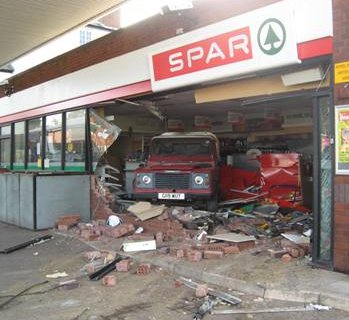Security issue: Ram raid
Contents
Security issue: Ram raid
Introduction
Ram raid is a particular technique for commercial burglars to gain access to primarily commercial premises, by means of driving -usually stolen- vehicles into locked or closed entrances, exits or windows.
Description
This act has occurred since at least the mid 1930s. The term came into widespread use after a series of such raids in Belfast in 1979 that was covered in news reports and in countries such as Australia that inspired a series of similar crimes.
[1]Notably, large trucks are used to break into technology companies and steal high-value equipment for resale on the black market.
Attributing circumstances
- proximity
- protection level in surrounding areas
- no relation with drugs or ethnicity
- lie of the area: travel to less-security conscious areas (satelite towns around cities)
- type of commercial enterprise
- limited planning, high degree of
- young perpetraitors
Impacts
Measures
- based on reducing occurence
- based on reducing damage

Commercial properties in areas prone to ram-raids often erect strong barriers or obstructions, such as bollards, to discourage such attacks. ATM centres are also victims of ram-raiding.
Many companies have come up with solutions to ram-raiding.[2] Everything from electronic bollards to electronic barriers have been employed to keep property from the raiders. Another solution is security guards, but teams of "round the clock" security are expensive and often not the most economical way of dealing with ram-raiding.
Footnotes and references
- ↑ http://www.youtube.com/watch?v=z5uvkfoghUo
- ↑ 'Raminator' foils ATM ram raids. The Daily Telegraph. 21 Aug. 2008.
MAP
<websiteFrame> website=http://securipedia.eu/cool/index.php?concept=Risk width=100% border=0 scroll=auto align=middle </websiteFrame>
<headertabs/>
